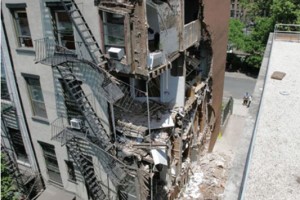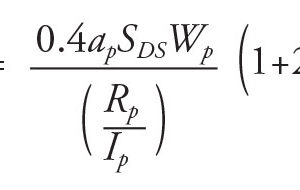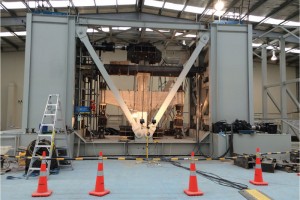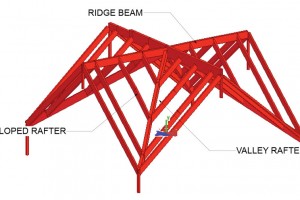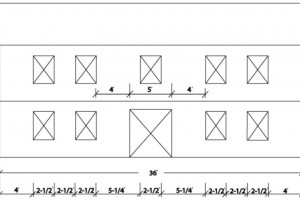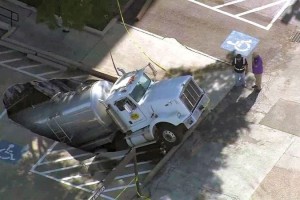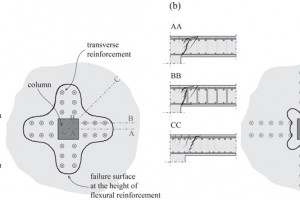What is your firm’s greatest asset? Your client’s trust? Your firm’s branding? Or could it be the sum abilities of your staff? If staff ability even ranks in your top three, then developing staff and utilizing their talent effectively is crucial for success. A key way to do this is to empower them. …
Review Category : Articles
For some people, networking can feel awkward, seemingly self-serving, discouraging, and embarrassing. Many people consider the term “networking” a dirty word and don’t like the uncomfortable feelings that come from attending a networking event. Uncomfortable or not, if you are not networking it is going to be much harder to grow and develop as a professional. Networking has the power to help you in very significant ways in your professional and personal life. …
Where Do We Stand?
SEI just finished its successful 2017 Structures Congress in Denver where we celebrated collaboration, innovation, and the Vision for the Future of Structural Engineering: A Case for Change. Reflecting on the program, sessions covered areas such as communications, mentoring, ethics, codes and standards, history, performance, multi-hazards, training, professional practice, health monitoring, sustainability, resiliency, construction, loads, rehabilitation, and solutions. All areas are meant to contribute towards the future of structural engineering. …
Party walls are frequently used in low-rise developments due to their capacity to provide economical structural support in denser areas. They were more prevalent and taller in earlier times when American cities developed. One can find many old party walls in cities along the Atlantic seaboard – from Portland, Maine, to Charleston, South Carolina. In the older areas of New York City, there are over 15,000 existing brick masonry party walls, many in four- or five-story buildings. …
Part 2: Advanced Topics related to ASCE 7-16
This article is the conclusion of a two-part series which discusses the seismic design provisions for nonbuilding structures found in Chapter 15 of ASCE 7-16, Minimum Design Loads and Associated Criteria for Buildings and Other Structures. The previous article (Part 1, STRUCTURE, April 2017) provided an introduction to the seismic design of nonbuilding structures. …
Evaluating the Seismic Performance of Concrete Elements
Seismic assessment of earthquake-damaged buildings typically involves damage surveys and structural analyses. In this unique project, the evaluations also included the seismic testing of nine full-scale beam-column connections and two portions of shear wall slab connections, extracted from reinforced concrete buildings with minor damage. The concrete specimens had to be tested in less than a year. As the number of specimens and limited time exceeded the capacity of available testing facilities, a local warehouse was turned into a temporary testing facility. …
What does stiffness have to do with strength? Well, engineers may remember learning about composite beam design, column design, or beams with compression reinforcing. Courses that included these topics introduced the “n” Factor. That is the factor that defines the ratio of the moduli of elasticity between materials. It is used in calculations to convert the stiffness of different materials to a common one. This was the foundation for understanding that stiffness plays a role in the distribution of forces in a section.
Per 2015 WFCM and 2015 SDPWS
In this article, a wood frame shear wall is analyzed and compared per American Wood Council’s 2015 Wood Frame Construction Manual (WFCM) and 2015 Special Design Provisions for Wind and Seismic (SDPWS). The difference between the segmented and perforated shear wall design approach and an overview of various hold-down design methods is discussed. Designers will likely find that the 2015 WFCM contains time-saving features for calculation of loads and design of shear walls and other building systems and components within the scope of the document. …
Structural engineering always has been a conservative profession. This is particularly evident in the structural building codes and standards. These regulations are intended to protect the public from deficiencies in design and construction. For the most part, they are effective. Why then do so many parking garages collapse? …
A Discussion on the Development of the Delamination of Concrete Cover in the Soffit of the Slab
Punching shear behavior is a topic that has attracted much attention from engineers in the last decades because of several collapses caused by punching shear failures. Introducing transverse reinforcement is the most common solution when the geometry of the slab-column connection has to be maintained and punching shear resistance has to be increased. …




